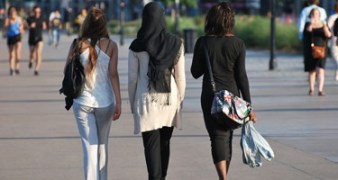Ethnic minority women face double discrimination in the workplace because of their race and their gender. Many fail at the application stage simply because of their names’, says a new report by the International Labour Organization (ILO).
When university graduate Jorden Berkeley, 22, began applying for a job, she was surprised to have no responses. Born in the United Kingdom of Caribbean parentage, she never dreamed that her name might be a problem.
But a careers adviser suggested that she begin using her more English-sounding middle name – Elizabeth – in her applications.
“I was surprised by what she said but I put my middle name on the CV as well. I started to get back responses, not necessarily job offers but it went from nothing to getting interviews. It was quite an eye-opener. I spoke to friends and family and it’s a common occurrence. I’ve also read reports of Muslim women taking off their hijabs to get a job,” Berkeley told ILO News.
Black, Pakistani and Bangladeshi Heritage Women
Zunade Wilson, 22, also of Caribbean origin, had a similar experience, getting more callbacks when she used her middle name, Renatta. When she started working as a classroom assistant, she says she also faced discrimination.
“I wear my hair natural, in an afro. We were coming up to a school inspection and I was told that while the inspectors were there, I should do something with my hair, that I needed to make it neater. I said that this is how my hair grows and that I was not going to straighten it to please her.”
A UK parliamentary report, Ethnic Minority Female Unemployment: Black, Pakistani and Bangladeshi Heritage Women said that in 2011, the overall unemployment rate for ethnic minority women in the UK was just over 14 per cent, more than double that of white women and higher than the unemployment rate for ethnic minority men.
Among Pakistani and Bangladeshi women it rose to 20.5 per cent. Many in this group reported being questioned about their intentions regarding marriage and children because of assumptions based on ethnicity, said the report.
Latin America, Asia
In other parts of the world, particularly Latin America and parts of Asia, indigenous women are often discriminated against when they enter the labour market. Sometimes they are ridiculed and are subject to verbal and physical abuse for wearing their traditional dress in the workplace.
“Indigenous women all over the world experience discrimination, not only on the ground of sex, but also because of their indigenous identity, ethnicity, colour or religious beliefs. This multiple discrimination is particularly evident as women, particularly young indigenous women enter and try to advance through the labour market,” says Jane Hodges, ILO Gender Equality Director.
Persistent Multiple Discrimination
More than 170 countries have ratified the ILO’s Convention 111 on non-discrimination in employment, which dates back to 1958. Yet the latest ILO report on Equality at Work found that discrimination continues to be “persistent and multifaceted,” and has worsened with the global economic crisis.
“Discrimination has also become more varied, and discrimination on multiple grounds is becoming the rule rather than the exception,” the report said.
According to a separate ILO study on multiple discrimination in many parts of the world, racial profiling targeting Muslim men and dress codes targeting Muslim women in the workplace have become more common amid the global political tensions following the September 11 attacks in the United States in 2001.
Ethnic Diversity in Workplace
The difficulty, say researchers, is separating the overlapping strands of exclusion linked to national and ethnic origin, race, religion and gender.
Lisa Wong, ILO senior non-discrimination officer, says that the ILO has identified racial discrimination as a priority concern. She is overseeing the production of a guide on promoting ethnic diversity in the workplace, which was pilot tested in South Africa at the end of January 2013.
“In spite of long-standing and well-established labour laws governing discrimination based on race in both industrialized and developing economies, discrimination on this ground, particularly where it intersects with sex, continues to be a challenge,” Wong says.
The guide will provide simple policy recommendations such as conducting an ethnic diversity audit, drafting and implementing a diversity policy, and advice on how to work with employers and workers’ organizations to raise awareness and improve managers’ ability to effectively resolve complaints.
“When correctly implemented and managed, these steps can lead to not only a more diverse workforce, but also to improved accessibility to new and diverse customer markets, which can affect not only a company’s reputation but ultimately profits,” Wong added.










